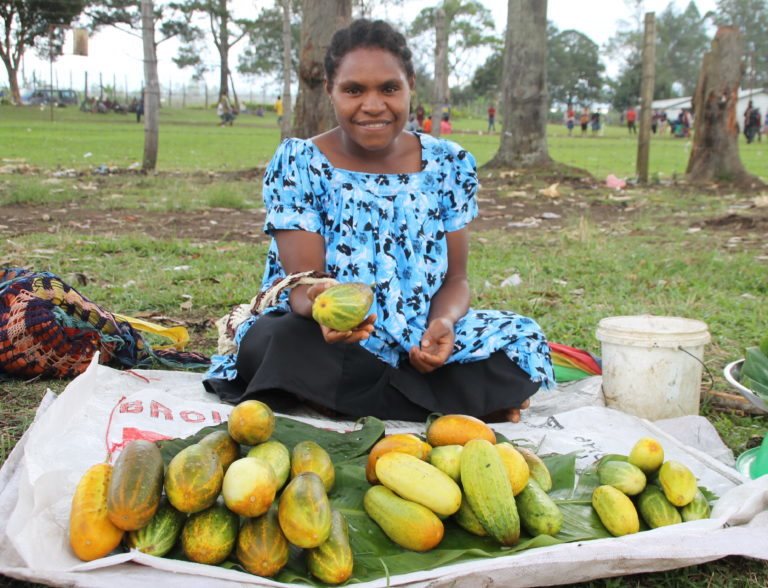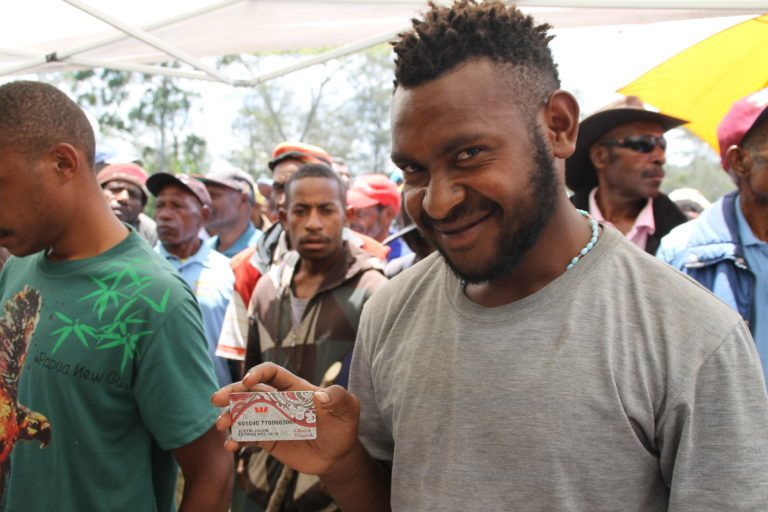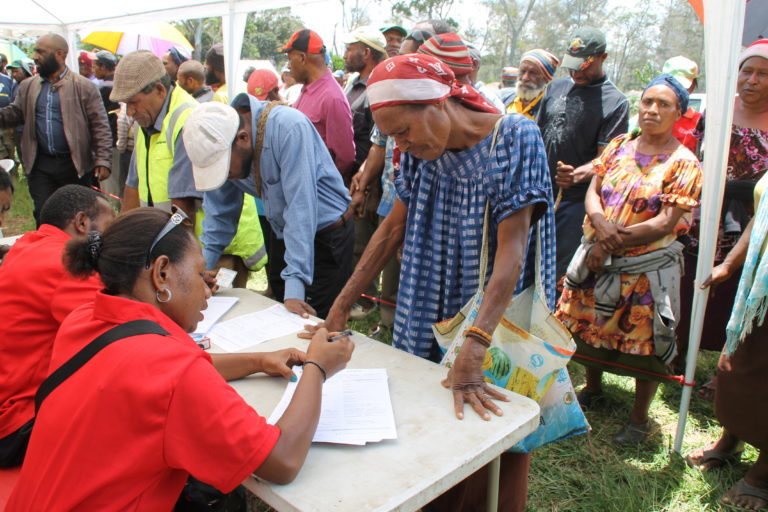Realities from the ground; Designing financial services around the ‘Wantok’ culture in the Highlands of Papua New Guinea
Tags
Since opening her first savings account in July 2017, Misa John has been actively saving about 400 kina (USD $119) a month. The 26-year-old mother of two earns a living by selling vegetables, fruits and ice blocks outside a community school in the Western Highlands of Papua New Guinea (PNG).
Misa says that she jumped at the opportunity to start saving when Westpac Bank visited her community offering their new Choice Wantok product that does not have any opening fees.
Directly opposite her makeshift stall is a Westpac Instore merchant where Misa banks her savings.
“I feel happy that I am able to put aside money for my savings. My first deposit was 40 kina and I have tried to save as much as possible each week. I try to bank whatever I make, because it’s safe in the bank and I am not tempted to spend my money on unnecessary items,” she said.
At the merchant store, Misa is also able to use her debit card to buy groceries and when needed for emergencies, she is also able to withdraw cash for personal use. Store owner, Mary Yand, says that her community relies on the services she provides, because the nearest bank is over an hour drive away and transportation is both costly and irregular. She also highlighted that her store serves between 6 and 10 customers each day using the Westpac digital payment services and the highest savings deposit that she has come across was 2,000 kina (USD $595).
 Misa John, a Westpac client, sells produce outside a community school. ©Erica Lee
Misa John, a Westpac client, sells produce outside a community school. ©Erica Lee
Product design around traditional financial support system
Up until 2017, only 10% of the population in the Highlands were using formal financial services. Westpac believes that understanding people, their culture, values, and the way things work for communities and linking those insights to the design of financial services can greatly improve the uptake and usage of those services. The ‘Choice Wantok’ savings account that Misa uses is a re-engineered bank account from Westpac to test new financial services that are tailored to the needs of lower income Highlanders.
Funded through a grant from the European Union and the Australian Government, the Pacific Financial Inclusion Programme (PFIP) has been working with Westpac to test this hypothesis, using an innovation lab approach. The Westpac Innovation Hub is looking at how the traditional ‘wantok’ system can inspire Highlanders, especially women and smallholder farmers, to adopt and use financial services to improve their daily lives.
Translated ‘wantok’ means ‘one talk’, implying strong social bonds. Often described as an impediment to development in Melanesian countries, the ‘wantok’ system brings together communities or tribes to share obligations such as debt, cost of funerals, or simply an unspoken understanding that when your family needs your help, you must provide it without question.
 ©Erica Lee
©Erica Lee
Product iterations based on what works for people
The Innovation Hub has been testing and validating new financial services and delivery models in the Highlands. For example, the Hub has worked in the past couple of months on improving the customer experience during the account opening process.
When the Westpac teams open accounts in the communities, they ensure that community leaders are present and act as witnesses to meet Westpac’s ‘Know Your Customer’ (KYC) requirements as many Highlanders lack formally recognised photographic identification. During the same process, customer information is collected through manual forms then entered into Westpac’s banking system within two days of sign up. This is followed by a notice to the head office in Port Moresby to create new debit cards for these clients. However, printing of the new cards and sending these back to the Highlands at times took up to a month. Westpac found that very often clients could not be traced back, or they lost interest in the service, which in turn resulted in low usage and activity rates. The whole process proved to be too cumbersome and did not cater for these type of clients. The team from the innovation hub has integrated these learnings and is currently testing on-site account opening and instant card issuing to ensure customers can immediately use the services once they have opened the account.
During the field-testing, Westpac’s Innovation Hub team also discovered that not all innovation needs to be technical or digital. Sometimes simple changes in the approach can make a big difference. Whilst they found out that the majority of their initial customers were men, through observations and testing of basic tweaks to their sales approach, they began to onboard more women, for instance by simply providing a separate account opening queue specifically for women.
The Innovation Hub project aims to onboard 15,000 additional low-income customers in the Highlands by September 2019 and anticipates that the project will lead to 100,000 additional customers benefiting from the new changes and services on offer.
Misa’s bank account empowered her and allowed her ‘to save for a rainy day’. Now, making a deposit or withdrawal can easily be done in her own community and for the first time, she can actually save using a bank account, rather than putting it under her mattress.
 ©Erica Lee
©Erica Lee
About the Pacific Financial Inclusion Programme
PFIP is a Pacific-wide programme that has helped more than two million low-income Pacific islanders gain access to formal financial services and financial education. It does so by funding innovative approaches in development of financial services, supporting policy and regulatory initiatives, and empowering consumers.
PFIP is jointly administered by the United Nations Capital Development Fund (UNCDF) and the United Nations Development Programme (UNDP) and receives funding from the Governments of Australia and New Zealand and the European Union.